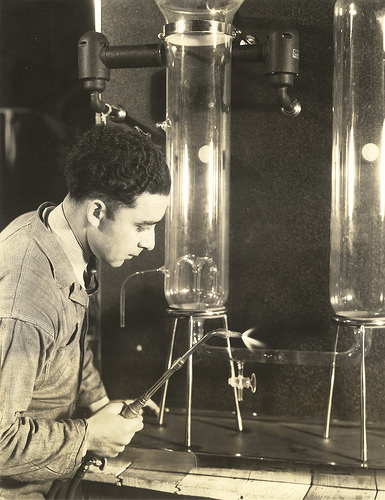ESPN Engineer Deems 3DTV Production the ‘Ultimate Science Experiment’

NEW YORK: With demand for 3D content for television increasing exponentially, broadcast engineers are navigating a steep learning curve during each new production.
With 3D “everything is a new experience,” said Chuck Pagano, executive vice president of technology, engineering and operations for ESPN. “I call 3D ‘the ultimate science experiment.’” Pagano made his comments during NewBay Media’s 3DTV 2010 conference in New York this week. The ESPN technology chief participated in a panel on 3DTV production during a conference that included leading figures from broadcast, cable, satellite and retail.
ESPN is at the forefront of 3DTV, with the anticipated launch of ESPN 3D on June 11. The network will mark the debut of the nation’s first dedicated 3DTV channel with the broadcast of the Mexico-South Africa opening match of the FIFA World Cup. ESPN will broadcast 25 of the 64 matches in 3D during the month-long event.
As with HD a decade ago, much of the early content for 3DTV involves live sports coverage. Much of the discussion focused on the difficulties in determining 3D production elements while maintaining the 2D experience for what is expected to be the majority of viewers for some time. One thing all panelists agreed on, though--there is no sport that doesn’t look better in 3D.
Nevertheless, “I think you’re going to find some sports lend themselves better to 3D than others,” said Ken Aagaard, executive vice president of engineering, operations and production for CBS Sports, which produced the 2010 NCAA Final Four in 3D. Aagaard added that, because interest in 3DTV has grown so quickly, broadcasters producing 3D content are trying to keep in step with networks wanting to market and promote the technology.
“We in production are behind this time,” he said. “With HD, the engineering and production people were trying to push the media.”
Now, with 3DTV, it’s the production guys trying to catch up with sales and marketing.
Panelists shared tips for producing effective 3D content that entertains viewers without overwhelming them, while keeping the focus on the game intact.
“There’s a great deal of attention to detail in a 3D production that starts with securing the proper camera positions and then extends to the director, the camera people, and the convergence operator that’s actually choosing the point of focus in the shot,” said Steve Hellmuth, executive vice president, operations and technology for the National Basketball League. The NBA was among the first organizations to dip their toe into live 3DTV production, with a 3D library that extends back to 2007.
Hellmuth said that before his production crew takes on a new event in 3D, they carefully review their previous 3D productions on both large and small screens. Because sales of 3DTV sets just a few months ago, it’s anticipated that much of the live 3DTV production will be seen in theaters for the near future.
Comparing the differences between producing in 2D and 3D was a common theme throughout the discussion.
“The language of 2D sports television has evolved over the past 50 to 60 years based on the fact that the average viewer watched it on a 20-inch screen,” said George Hoover, chief technology officer for Pittsburgh-based NEP Broadcasting, which launched the nation’s first 3D production truck in the fall of 2009.
The extreme close-ups and wide shots characteristic of today’s sports coverage don’t work as well in 3D. “You really need to let people ‘live inside the frame,’” said Hellmuth, who also advised that directors will need to refrain from the fast cutaways inherent in current sports coverage to allow viewers to enjoy the 3D effect. “We really need to slow the directors down and constantly reinforce with the camera crews that this is a different experience and that they have to attend to the details of viewers’ needs.”
Sharing 3D and 2D content within the same production is a necessary element to live sports coverage as not all shots lend themselves to 3D. Although Aagaard acknowledged that due to the different camera positions required for 2D and 3D content, “for the moment, it looks like we’re going to look at two separate productions.”
Steve Schklair, CEO of 3D camera rig provider 3ality Digital Systems, warned that the cost of deploying two camera crews is unrealistic in the long run. “That economic model won’t sustain itself for very long,” he said.
Production of 3D content is ramping up quickly; Hoover announced that NEP plans to launch up to three new 3D production trucks in 2010, with the first two being deployed in time for July’s MLB All-Star Game in Seattle. He also hinted that a telecast of a Broadway production in 3D may come as soon as this fall.
Despite concerns over deploying the technology, all agreed that 3D is here to stay and that it will enhance the television viewing experience--and that the lessons learned from each new production will improve the techniques.
“It’s all about how you tell the story,” Pagano said. “We are just telling it from a different perspective.”
Added Alec Shapiro, senior vice president, broadcast and professional sales division for Sony, “it’s the latest production in 3D that looks the best. The techniques are improving.”
-- Tom Butts of TV Technology
For additional coverage of the NewBay-sponsored 3DTV 2010 breakfast, see:
“3D TV May Spur Audio Sales: TWICE Panel” (TWICE)
“Vitelli, Perry: Standards, Education, Content Critical To 3D Adoption” (TWICE)
“In-Store Demos Will Drive 3D Sales”(TWICE)
“Consumer Adoption Still Uncertain” (Broadcasting & Cable)
(Image of E. Pantanorepairing an exhibit in the chemistry section of the Chicago World’s Fair Hall of Science in 1934, from Century of Progress Records, 1927-1952, University of Illinois at Chicago Library.)
The professional video industry's #1 source for news, trends and product and tech information. Sign up below.
